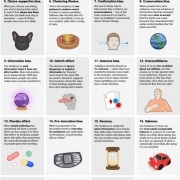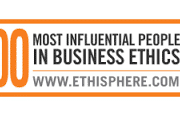Testing, Testing: Drawing Conclusions From Test Environments
 One challenge identified in academic literature on behavioral ethics and business is finding practical applications for the lessons learned from test environments. All of us at Ethical Systems, including our collaborators and partners, are working on how to best leverage these findings.
One challenge identified in academic literature on behavioral ethics and business is finding practical applications for the lessons learned from test environments. All of us at Ethical Systems, including our collaborators and partners, are working on how to best leverage these findings.
This challenge is succinctly presented by Donald C. Langevoort of Georgetown University in a recent article about behavioral ethics and behavioral compliance. As he points out, the lessons from behavioral ethics are intuitive and while the outcomes aren’t necessarily predictable, they are often unsurprising. It makes sense, for example, that ‘just in time’ communications improve ethical decision-making because the reminder of the moral fallout of one’s choices become prominent. In another example, Langevoort describes the concept of ethical blind spots– as popularized by two ES collaborators, Max Bazerman and Ann Tenbrunsel– distorting good judgment and sensible decision making.
So, if being ethical is intuitive, then why the continued failures? Is this indicative of a systemic problem, a gap in organizational culture or, perhaps, a failure of leadership?
There are myriad arguments on why such failures occur, including evolutionary theories (i.e., deception leads to success and survival) and hypotheses about incentives for unethical behavior (i.e., cheating pays, though for organizations research shows ethics pays better).
Langevoort’s article provides a comprehensive overview on the behavioral ethics literature and insights into their use in an effective corporate compliance program. He cites Maclean and Benham’s 2010 article in the Academy of Management Journal as an apt example of how the well-intentioned implementation of a compliance policy led to an increase in non-compliant practices. The example (see page 14 of the Langevoort article) describes a financial services firm whose insurance brokers were generating additional fees by “churning” life insurance policies – a practice of using the cash value of a customer’s current life insurance policy to fund a renewal (and thus devaluing the total value of the insurance). To address this misbehavior, the firm initiated a compliance monitoring system, and subsequent recapture of the agent’s commission, to review transactions identified as churning transactions when funds were transferred from a client’s account within 90 days of the sale. The broker’s response: conduct the fund transfer on day 91 to avoid the compliance review. The rate of substitutions went up. The study’s conclusion was that the broker’s perception of the weak compliance program was a signal from management that managers want to appear to be taking action to address the issue without actually preventing the profitable, yet highly unethical, activity. Their recommendation is that organizations better integrate their compliance programs more fully into a firm’s day-to-day processes.
The goal is to move business from a mindset of compliance to broader initiatives to motivate ethical behavior. As most compliance officers realize, the toolkit for behavioral change is complex. In addition, there are pressures to show progress in the development of compliance policies and procedures, and yet a corresponding inability to measure success (how do you show that misbehavior didn’t happen?). Ethical Systems, along with the business ethics community, will together continue to address these needs and draw out ideas to apply from the social sciences.
*image courtesy of sdtimes.com







